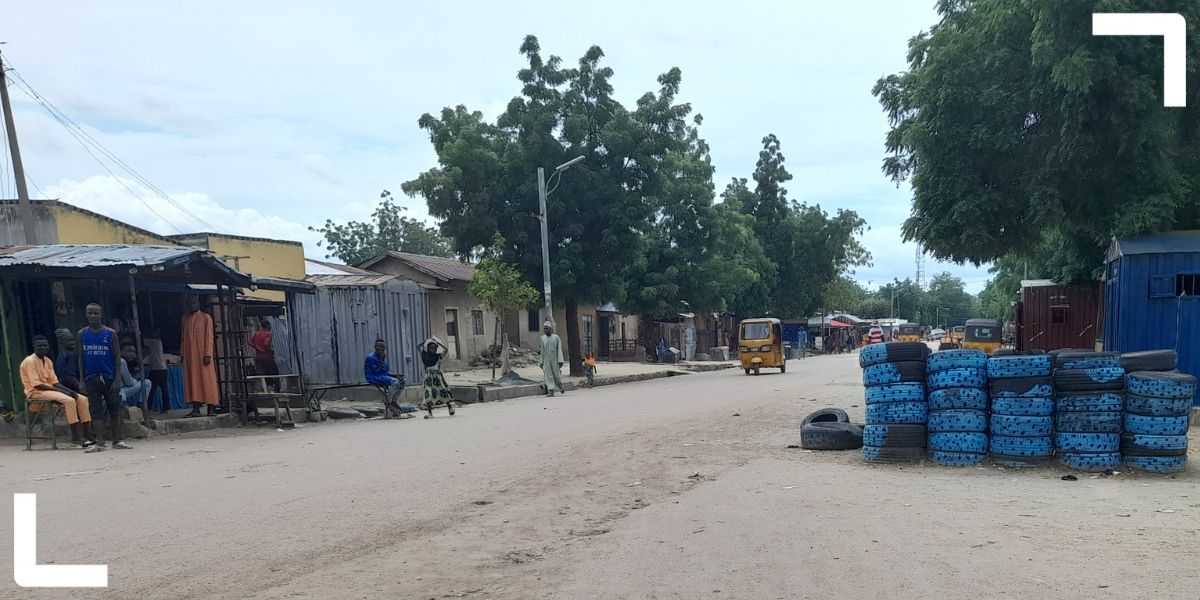Maiduguri, a city in north-eastern Nigeria, has been plagued by insurgency perpetrated by Boko Haram over the past 13 years. While the level of insurgent attacks has been curtailed, Maiduguri manifests all the characteristics of a fragile city. With state resources concentrated on the fight against the Boko Haram insurgency, I am interested in what territorial and governance gaps may have emerged and the implications on everyday safety and security in the city.
Examples from other countries suggest that levels of gang activity and criminality increase in the face of instability and seemingly weak institutions. My work builds on this, asking what other type of crime and insecurity were taking root within urban communities in Maiduguri and who was handling these, if and/or when they occurred. So, in August 2022, I undertook fieldwork in Maiduguri to explore the role of informal security providers (ISPs or non-state actors) in urban safety and security. As an “outsider”, and based on media reports, I perceived Maiduguri as very unsafe, and I was apprehensive about having in-person interviews. But my curiosity and desire to generate first-hand knowledge got the better of me.
Selection of research communities
On arrival in Maiduguri, I had a reconnaissance tour of residential areas to determine the communities to include in the study. The selection criteria included communities with the presence of ISPs – predominantly low-income neighbourhoods and communities which were relatively safe for fieldwork and where I could find local contacts. The presence of ISPs in communities was established where we could identify makeshift structures used as duty posts by the ISPs, or blue-coloured old vehicle tyres or sandbags that were used to create checkpoints on the streets and which symbolically indicate the presence of ISPs (Figure 1). The blue-coloured old vehicle tyres were used by the Civilian Joint Task Force (CJTF), while the vigilante group used sandbags.
Figure 1: Spatial symbols of the presence of informal security providers in Maiduguri

The communities selected for the study were Gwange, Mairi Kuwait, Bulumkutu, Old Maiduguri and Old GRA (Figure 2). The first four communities are low-income areas, with high population and building densities, and poorly developed infrastructure like roads and electricity. Gwange, Old Maiduguri and Bulumkutu have significantly high proportions of unemployed and informal sector-based residents.
On the other hand, Mairi Kuwait has a higher number of residents who are employed in the formal sector – especially at the University of Maiduguri, which is adjacent to the community. Although the Old GRA is a middle to high-income community, it was included in the study in order to compare the perceptions and experiences of informal security provisioning between low- and high-income communities. It was equally important to see how conditions of inequality disproportionately affect residents’ experiences of crime and shape responses to safety and security in urban communities.
Figure 2: Locations of the selected communities
Local culture and experiences in the field
The African Cities Research Consortium (ACRC) team in Maiduguri assisted in identifying suitable research assistants for my fieldwork, and having local partners proved to be very helpful. Maiduguri is a city with deeply rooted cultural and religious beliefs, and my field assistants gave me tips on behavioural conduct. For visits to some of the communities detailed above, I was advised to wear ankle-length gowns, and to have a veil handy. For other communities, no strict dress code was required but I was expected to cover up decently and again have a veil to hand.
As a female researcher, reliance on only one other female research assistant was unfeasible, as it was culturally inappropriate for two women to approach a man for an interview. Nor could I go into the field with only a male assistant, as female respondents might feel uncomfortable answering questions posed by a man. To address these issues, I recruited and worked with a male and a female research assistant.
Access to communities
An ISP leader offered to provide an ISP field guide and a vehicle for my fieldwork in Maiduguri. After discussing this tempting offer with my research assistants, I turned it down. We felt that being accompanied to the communities by an ISP could affect respondents’ willingness to participate in the research (for fear of retribution). It could also undermine their ability to answer questions honestly. And our “fear” was confirmed in one of the communities, where we sensed that the ISPs’ presence during interviews affected the responses given by the interviewees. The research team had to ask the same questions repeatedly and in different ways to extract reasonable information from the respondents.
My research assistants had previous work and data collection experience in Maiduguri, and so had some contacts in the communities. Since my team and I were “strangers” in the selected communities, I relied on these local contacts to accompany us, for security reasons, and to negotiate meetings with the research participants. In some communities, our local guide led us in and out through different streets whenever we visited, so as not to attract undue attention.
Selection of research participants
Research participants included traditional rulers, whose permission we sought to conduct interviews within their communities (see Figure 3). Respect for the hierarchy or chain of command was important to these traditional rulers. In one of the communities, a Bulama (ward scribe) was our contact, but our interview session was disrupted by the Lawan (ward head), who felt that we had disregarded his authority and obtained permission from his subordinate. We apologised and admitted that it was an oversight before the Lawan allowed us to continue with the interviews in his “domain”. Our experience here showed that local power relations (in)directly shape participant recruitment.
While it is helpful in fragile contexts to depend on local contacts for the selection of research participants, it had its downsides. In one community, three of the six women invited for a focus group discussion (FGD) session were from the same household, indicating selection bias. During the interview, they signalled to the other women not to disclose information to the research team. Though the three women spoke less, two others (not related) were quite vocal and spoke extensively about their experiences of insecurity and with the ISPs.
Figure 3: Seeking permission from the Lawan (Ward Head) of Gwange II
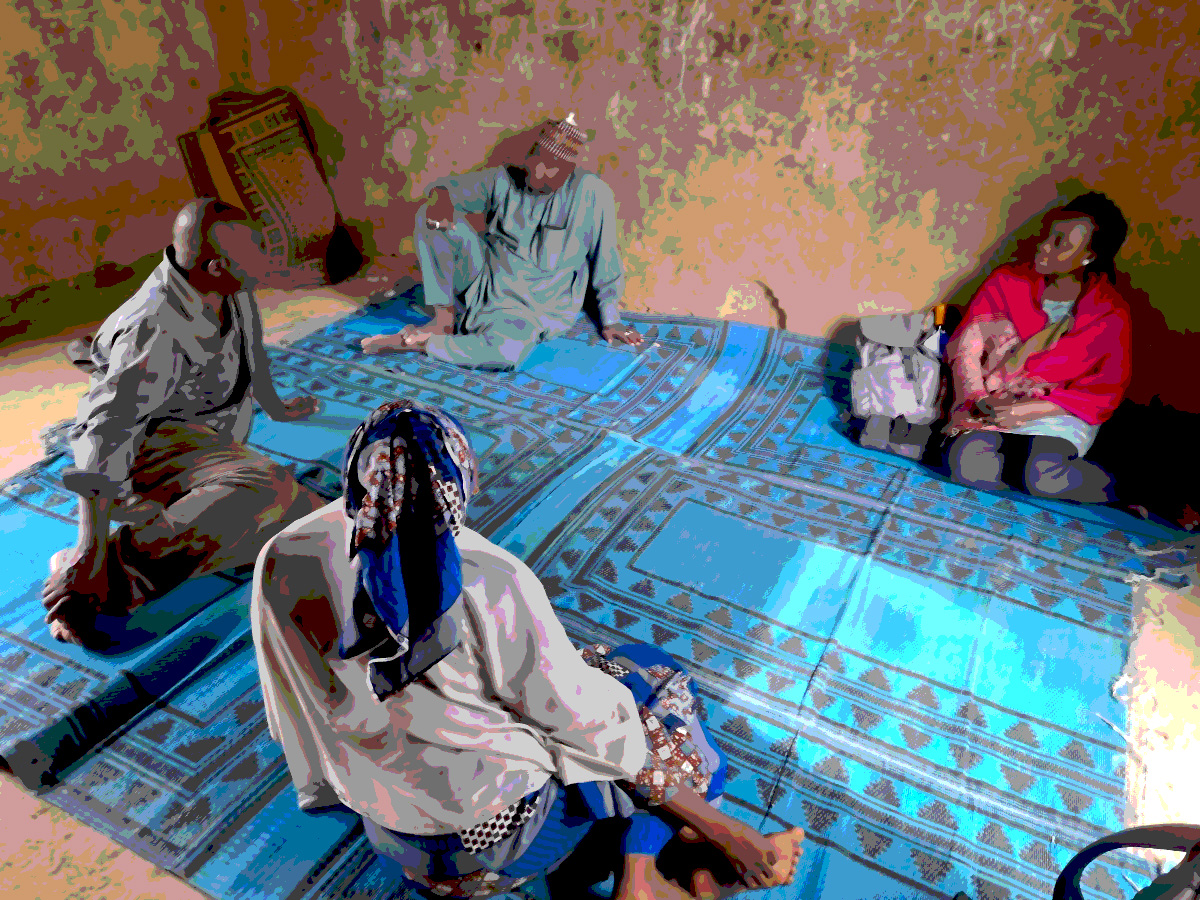
Interviews and locations for sessions
Interview length varied. Some respondents were not so expressive, but we let chatty respondents speak for as long as they wished. This often helped to draw the less expressive respondent(s) back into the conversation, enriching the information disclosed. For some respondents, the interview sessions seemed “therapeutic”, helping them to relieve the trauma they had experienced while the insurgency raged in Maiduguri. Even though issues of insurgent attacks were outside the scope of my research, respondents often linked their current experiences with the past. The research team allowed the respondents to speak freely, and this extended the time for some interview sessions.
It was also important for the research team to correct the respondents’ assumptions that we were generating information to “solve the security issues” in Maiduguri. As communities that had experienced violent insurgent activities, the level of despair was palpable. Thus, every visitor was seen as a staff of an international humanitarian organisation that had come to the rescue of the community. The research team clearly explained the purpose of the interviews before commencing any session. In addition, to minimise the risk of getting “pre-coded” answers to the research questions, my team limited the information we gave about the research to the local guides.
Interviews and FGDs were conducted mainly in open spaces and primary school premises, which were considered safe spaces by the respondents (see Figure 4). While men had no issues with having interviews in open spaces, women felt more comfortable having interviews in enclosed spaces away from the prying eyes of passers-by. On one occasion, the local contact even insisted that we hold the FGD with women in the sitting room of one of the respondents’ homes, as this was viewed as “culturally appropriate”. Women preferred enclosed, more private spaces as part of religious considerations – especially for Muslim women, whose religion places restrictions on their mobility and visibility. On the other hand, the preference for enclosed spaces ensured that the female respondents were not seen speaking to “strangers” – a situation that could potentially place them at odds with other community members.
Figure 4: FGD sessions with men (outdoors) and women (in a classroom) in Maiduguri
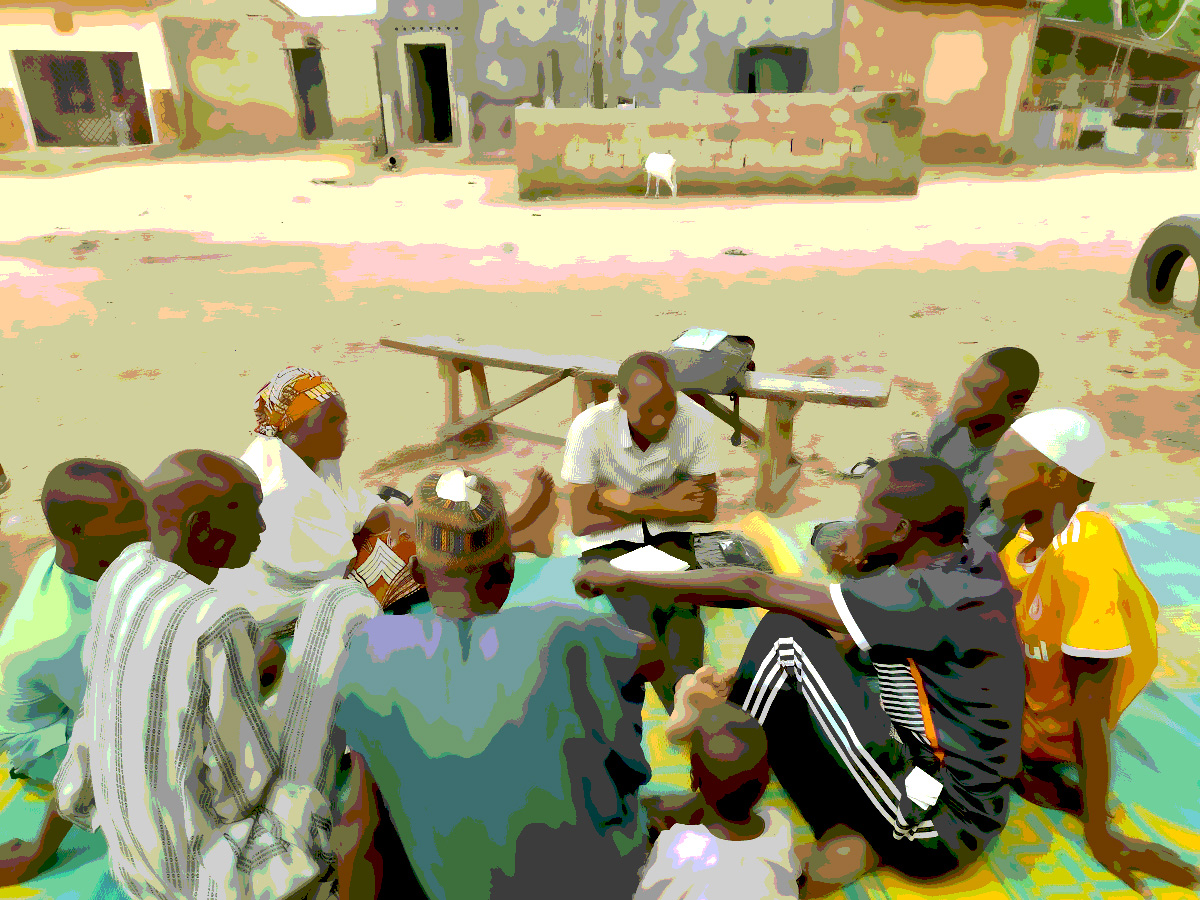
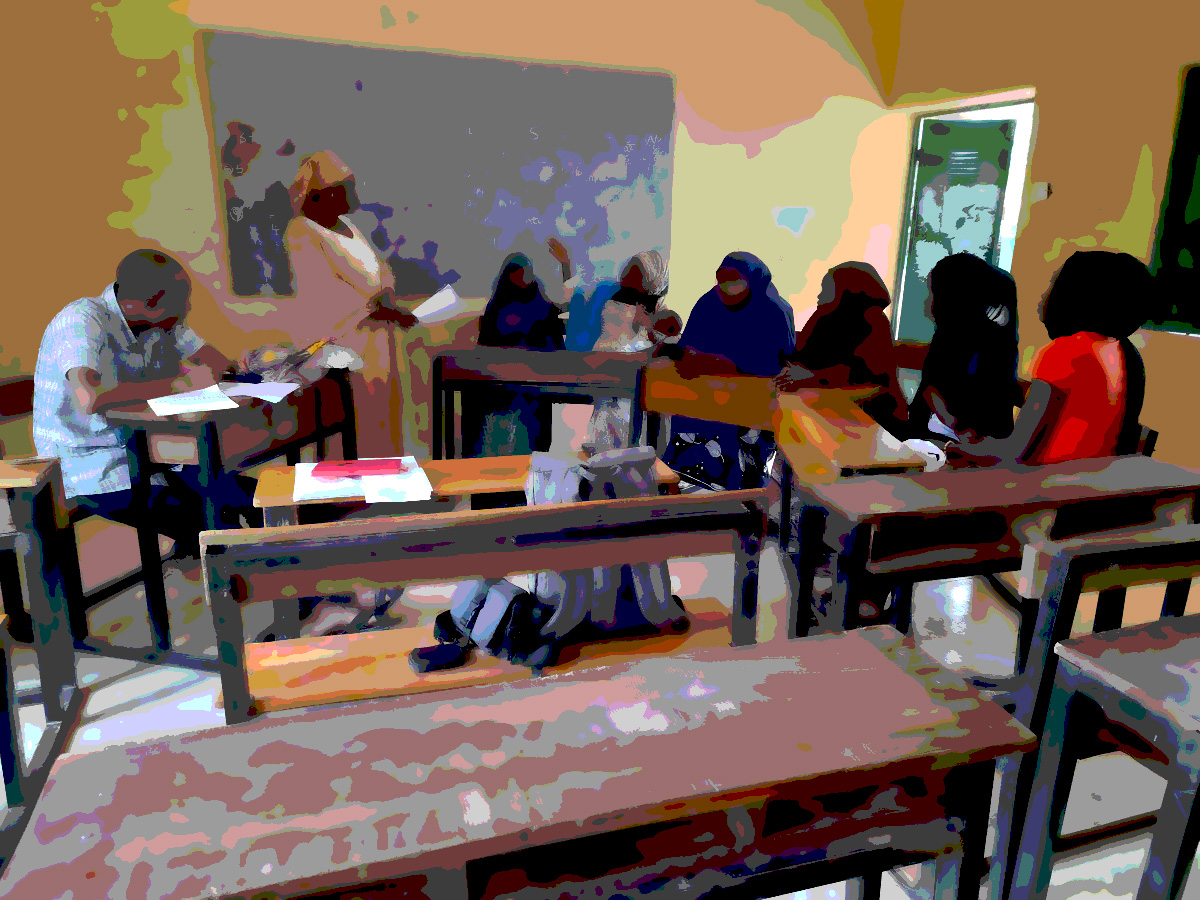
Adjusting research plans to prevailing conditions
Flexibility is key when conducting research in fragile contexts. My initial plan was to have 20 interviews with residents, 12 key informant interviews and eight FGDs. However, this changed to 15 interviews, 22 key informant interviews and nine FGDs, in addition to informal chats with the locals. We made impromptu adjustments, as issues arose during fieldwork. On one occasion, for example, field assistants asked us to reduce the number of interviews we had planned because the community was unsafe, and they did not want an extensive visit. Instead, we held FGDs in that community, which allowed us to cover a wider range of residents in a shorter time.
Informal interactions were useful in understanding the local context and confirmed some respondents’ narratives. Open to learning from everyone, I had random conversations with people I encountered during my daily fieldwork routine. One time I stopped a keke (tricycle) rider and asked him to take me to Mairi Kuwait – one of my study sites. He hesitated and narrated an unpleasant experience he had had in the past after conveying some passengers to the area. He told me that young male passengers “disappear” (run off) into the neighbourhood without paying their transport fare. If the driver tries to pursue them, he is threatened with mob action by armed youths. This account was instructive and was confirmed subsequently by interviews revealing that the community was notorious for knife fights, often involving young male rival groups.
Lessons learnt and next steps…
Generally, the fieldwork experience in Maiduguri was worthwhile. I found that the current perceptions of the state of security in Maiduguri by people living outside the city were quite different from the actual feelings and experiences of those living in the city.
While I formed my views of safety in Maiduguri during my month-long stay there, in some ways, I also constructed opinions of the city through the narratives of my field assistants. So, I felt comfortable visiting the areas that my field assistants considered as safe and avoided communities that they thought were unsafe. This is quite instructive, as researchers need to evaluate the safety of a place from the viewpoint of those living there and not from external assessors. As a first-time visitor to Maiduguri, I felt relatively safe going around some parts of the city in public transportation. Although I was easily identified as a visitor because I could not communicate effectively in Hausa, which is the language generally understood by residents, that did not affect my feelings of safety in the city.
Visiting the communities physically and interacting with the residents first-hand brought clarity to their living conditions and perspectives on informal security providers. I also learnt some valuable lessons from this fieldwork, particularly around engaging with local contacts and the practicality of research in fragile contexts. My take-home insight is that it is vital to have a back-up plan in situations where the local contact’s choices might undermine your research and result in selection bias. This can be accomplished by introducing an on-the-spot random selection of research participants apart from the pre-selected participants, in order to compare the information generated. It is also useful to be adaptable, so that changes can be made to the interview questions, choice of interview method (for instance, switching from individual interviews to FGDs), research strategies and number of interviews. While these lessons are important, contexts and experiences may vary. It is crucial to approach fieldwork in fragile contexts with an open mind, willing to make decisions and adjustments as the work progresses and with an understanding of the context and local culture.
Finally, researcher, fieldworker and participant safety are paramount, particularly when researching insecurity. Research for me is about bravery, being inquisitive and facilitating respectful mutual learning, but not taking unnecessary risks. The account above offers insights for other researchers on ways in which this can be achieved.
For the next steps, I sent the interviews to be translated and transcribed. And while waiting for the transcripts and preparing for the writing up phase of the research, I am reflecting on how to make the research findings meaningful to the research participants, so that the exercise is impactful, rather than extractive.
Header photo credit: Patience Adzande
Sources: Figures 1, 3 and 4 are drawn from the author’s fieldwork, August 2022.
Note: This article presents the views of the author featured and does not necessarily represent the views of the African Cities Research Consortium as a whole.
The African Cities blog is licensed under Creative Commons Attribution-NonCommercial-NoDerivatives 4.0 International (CC BY-NC-ND 4.0), which means you are welcome to repost this content as long as you provide full credit and a link to this original post.
